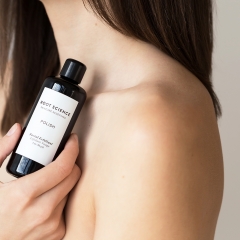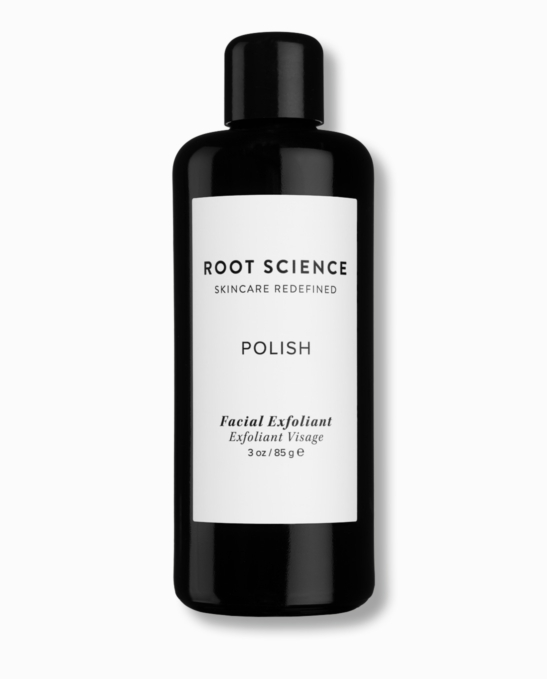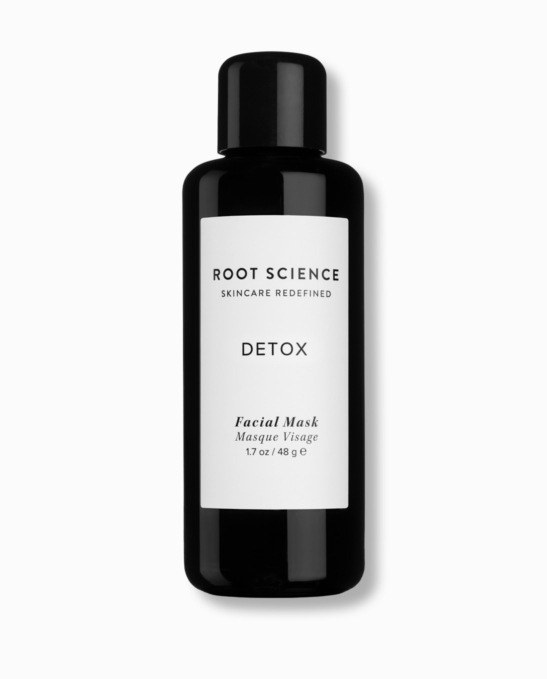Want to wake up to baby-soft skin that reflects the morning glow? The benefits of exfoliation go far beyond what most people realize.
What Is Exfoliation?
Exfoliation is the process of removing dead skin cells from your skin’s surface. The benefits of exfoliation include unclogging pores, reducing breakouts, and revealing brighter, more even-toned skin.
Here’s why your skin needs help: Our skin naturally regenerates approximately every 28 days, but factors like age, sun damage, and environmental stress can slow this process. Without proper exfoliation, dead skin cells accumulate, leading to:
● Clogged pores and congestion
● Dull, uneven skin tone
● Reduced product absorption
● Increased breakout frequency
Did You Know? Studies show that regular exfoliation can increase skin cell turnover by up to 30%, making it one of the most effective at-home strategies for targeting signs of aging.
The Science Behind Benefits of Exfoliation
Research published in dermatological journals reveals that the benefits of exfoliation are rooted in enhanced cellular renewal. When you remove dead skin cells, you:
1. Stimulate collagen production – Leading to firmer, more youthful-looking skin
2. Improve product penetration – Active ingredients can reach deeper skin layers
3. Reduce inflammation – Less bacterial buildup means fewer breakouts
4. Enhance light reflection – Smoother skin surface creates a natural glow
6 Proven Benefits of Exfoliation
1. Evens Skin Tone and Boosts Radiance
Timeline for results: 2-3 weeks of consistent use
The benefits of exfoliation are immediately visible in your skin’s brightness. By removing the layer of dead, dull skin cells, you reveal the fresh, radiant skin underneath. This process improves your skin’s ability to reflect light, creating that coveted natural glow.
2. Prevents and Reduces Pore Congestion
Timeline for results: 1-2 weeks
One of the most appreciated benefits of exfoliation is clearer pores. Regular exfoliation removes:
● Excess sebum buildup
● Dead skin cells that clog pores
● Environmental pollutants and debris
Pro tip: While you can’t change your pore size, keeping them clear makes them appear significantly smaller.
3. Keeps Blemishes at Bay
Timeline for results: 3-4 weeks
The acne-fighting benefits of exfoliation come from preventing the conditions that cause breakouts. By removing dead skin cells and excess oil, you create an environment that makes it hard for acne to thrive.
⚠️ Important: Use gentle pressure around active breakouts to avoid aggravation.
4. Firms Skin and Reduces Fine Lines
Timeline for results: 4-6 weeks
Perhaps the most impressive benefits of exfoliation relate to rejuvenation. Exfoliation stimulates collagen production through controlled cellular turnover, which:
● Plumps the appearance of fine lines
● Improves skin elasticity
● Promotes firmer looking skin
5. Smooths Rough Skin Texture
Timeline for results: 2-3 weeks
Texture issues frustrate many people, but the benefits of exfoliation shine here. Whether your texture problems stem from:
● Dry, flaky skin
● Acne scarring
● Sun damage
Regular exfoliation reveals the smoother skin beneath the surface buildup.
6. Enhances Skincare Product Absorption
Timeline for results: Immediate
This benefit of exfoliation is often overlooked but crucial. By removing the barrier of dead skin cells, your serums, moisturizers, and treatments can effectively interact with your skin instead of sitting on top of build up.
Maximize this benefit by:
● Exfoliating before applying serums
● Using products with active ingredients immediately after exfoliation

Organic. Phytoactive. Skin Nourishment.
Treat Your Skin To A Natural Face Exfoliant Powered By Superfoods.
Types of Exfoliants: Which Delivers the Best Benefits?
Chemical Exfoliants
Alpha Hydroxy Acids (AHAs)
● Benefits: Surface-level brightening and smoothing
● Ideal for: Dry skin, hyperpigmentation, fine lines
● Popular types: Glycolic acid, lactic acid, mandelic acid
Beta Hydroxy Acids (BHAs)
● Benefits: Deep pore cleansing and acne prevention
● Ideal for: Oily, acne-prone skin
● Popular type: Salicylic acid
Physical Exfoliants
● Benefits: Surface-level brightening and smoothing
● Ideal for: All skin types
● Popular types: Rice flour, mineral clay, oatmeal, mucilaginous herbs
❌ Avoid these harsh ingredients:
● Sugar and salt scrubs
● Fruit pits and nutshells
● Baking soda
● Microbeads (harmful to environment)
Natural Ways to Unlock Benefits of Exfoliation
1. Clay Masks (1-2x per week)
Clay masks offer unique benefits of exfoliation without the risk of photosensitivity. They:
● Bind to surface impurities
● Absorb excess oil
● Provide gentle exfoliation by absorbing dead skin and excess oil
DIY Enhancement: Mix clay with honey for added antibacterial benefits.
2. Powder Exfoliants
Why powder formulas excel:
● Longer shelf life (no water = no bacteria)
● Customizable consistency
● Gentle yet effective
How to use for maximum benefits of exfoliation:
1. Mix small amount with water
2. Apply in gentle, upward circular motions
3. Focus on T-zone and rough areas
4. Rinse thoroughly with lukewarm water
Skin Tip: When choosing a powder exfoliant look for one that is gentle and loaded with antioxidants, such as our superfood exfoliant Polish.
3. Honey Masks
Raw honey provides enzymatic exfoliation benefits plus:
● Natural antibacterial properties
● Anti-inflammatory compounds
● Gentle enough for sensitive skin
Application: Apply raw honey to clean skin for 15-30 minutes, then massage gently while rinsing.
Safety Checklist for Maximum Benefits of Exfoliation
✅ Always patch test new products
✅ Start slowly – once weekly, then increase
✅ Use sunscreen daily when using chemical exfoliants
✅ Moisturize immediately after exfoliating
✅ Avoid over-exfoliation – more isn’t better
Signs You’re Getting the Benefits of Exfoliation:
● Brighter, more even skin tone
● Smoother texture
● Reduced breakouts
● Better product absorption
● Softer skin feel
Red Flags – Stop Exfoliating:
● Persistent redness or irritation
● Increased sensitivity
● Burning sensation
● New breakouts (over-exfoliation acne)
Expert FAQ: Benefits of Exfoliation
How quickly will I see the benefits of exfoliation?
Most people notice immediate softness and brightness. For significant improvements in texture, tone, and pore appearance, expect 2-4 weeks of consistent use.
Can I get the benefits of exfoliation with sensitive skin?
Absolutely! Start with enzymatic exfoliants like honey or very mild AHAs (lactic acid). Always patch test and begin with once weekly application.
Do the benefits of exfoliation work for mature skin?
Yes! Mature skin often benefits most from exfoliation as natural cell turnover slows with age. Focus on gentle exfoliation and always follow with moisturizer and SPF.
Should I exfoliate before or after cleansing?
For maximum benefits of exfoliation, cleanse first if wearing makeup or SPF. Otherwise, you can exfoliate on clean, dry skin.
Transform Your Skin with the Benefits of Exfoliation
The benefits of exfoliation extend far beyond basic skin maintenance. From revealing your natural glow to preventing breakouts and enhancing your other skincare products, regular exfoliation is one of the most effective steps you can add to your routine.
Remember the key to maximizing benefits of exfoliation:
● Choose the right type for your skin
● Start slowly and build up frequency
● Always follow with moisturizer and SPF
● Listen to your skin and adjust accordingly
Ready to experience these transformative benefits of exfoliation? Start with our gentle, superfood-powered Polish, formulated with skin-loving ingredients like rice flour and antioxidant-rich botanicals. Your skin will thank you.
Have questions about the benefits of exfoliation for your specific skin concerns? Our skincare experts are here to help you create the perfect routine for your unique needs.
Shop Featured Products
Disclaimer: This content is for informational and educational purposes only. It is not intended to provide medical advice or to take the place of such advice or treatment from a personal physician. All readers/viewers of this content are advised to consult their doctors or qualified health professionals regarding specific health questions. Neither Root Science nor the publisher of this content takes responsibility for possible health consequences of any person or persons reading or following the information in this educational content. All viewers of this content, especially those taking prescription or over-the-counter medications, should consult their physicians before beginning any skincare, nutrition, supplement or lifestyle program. The views and products expressed are not intended to treat, cure or prevent any disease.
Image Sources: Exfoliating with Polish via Root Science


